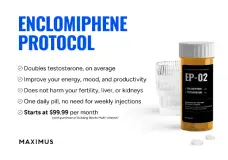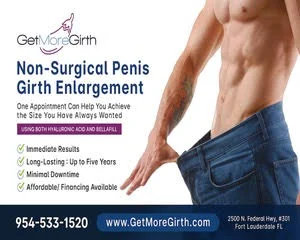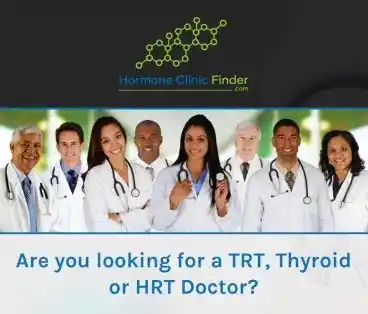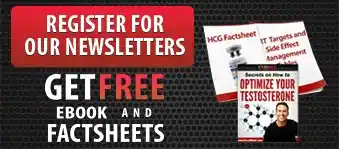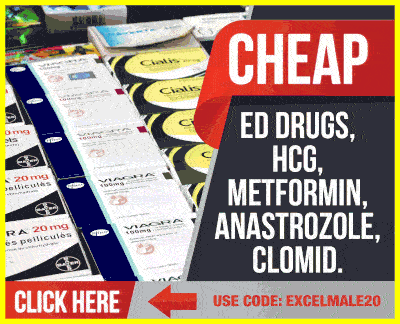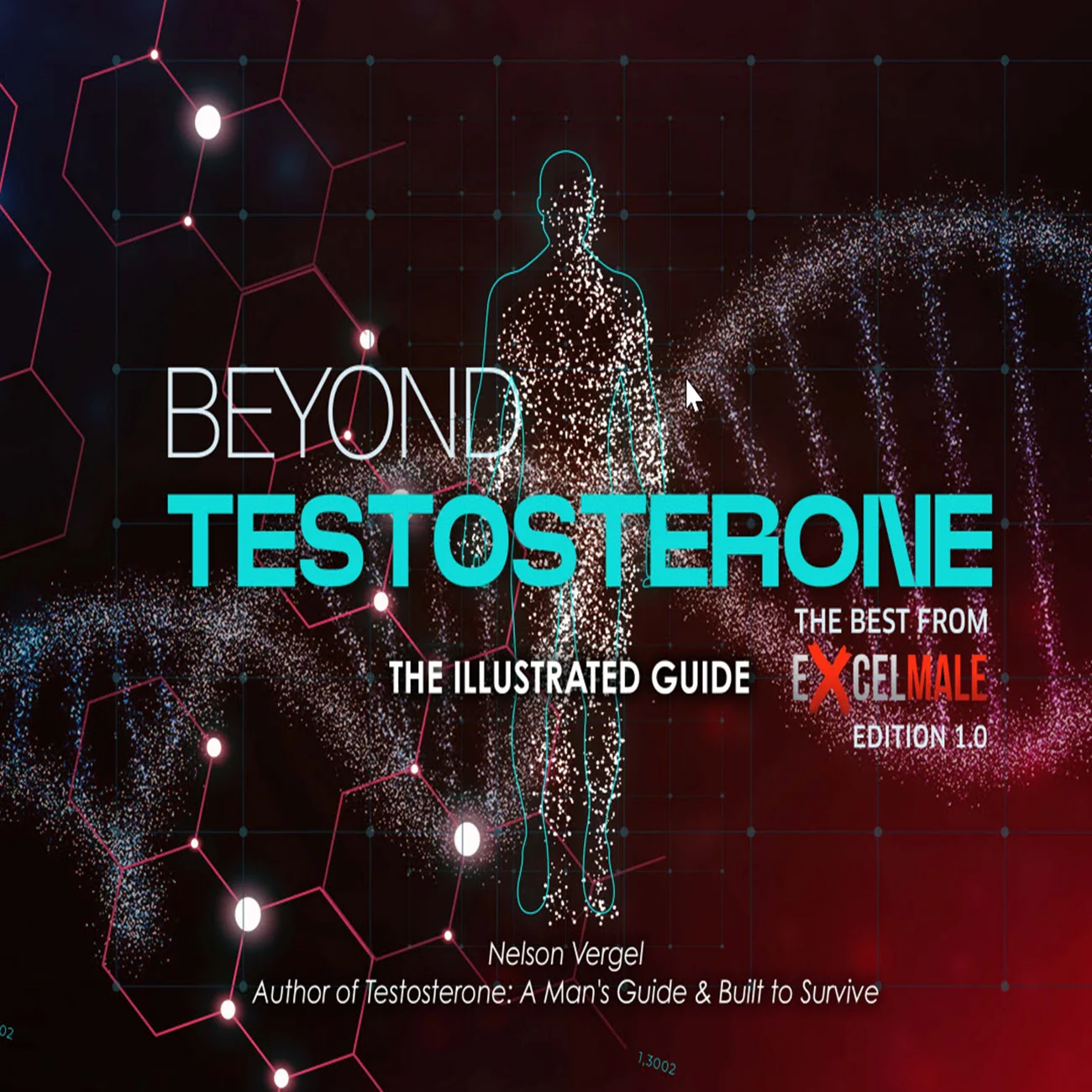Testosterone Therapy in Pre- and Post-Menopausal Women
Testosterone Therapy for Women: Indications and Evidence (2010–2025)
Low Sexual Desire (HSDD) and Sexual Function
Fatigue and General Well-Being
Sources: Recent systematic reviews and RCTs pubmed.ncbi.nlm.nih.gov pubmed.ncbi.nlm.nih.gov pubmed.ncbi.nlm.nih.gov cochrane.org, consensus guidelines pmc.ncbi.nlm.nih.gov acog.org, and clinical reviews pmc.ncbi.nlm.nih.gov pubmed.ncbi.nlm.nih.gov were used to compile these findings. Each citation links to the source of the specific information presented.

Reasons for Regulatory Failure of Testosterone Approval for Women
Testosterone Therapy in Women: Regulatory Attempts
Regulators worldwide have generally not approved testosterone products for women (except Australia). As one guideline notes, “no government-approved testosterone products for HSDD in women are available in the US or [elsewhere] except in Australia” pmc.ncbi.nlm.nih.gov pmc.ncbi.nlm.nih.gov. Over the past two decades, companies have pursued approvals for female testosterone (often for hypoactive sexual desire disorder, HSDD, and other menopausal symptoms), but with limited success. Below we summarize all known IND/marketing applications and outcomes by region.
United States (FDA)
Across these programs, the common issues were efficacy vs. placebo and long-term safety. Clinical trials showed that transdermal testosterone can improve sexual desire in postmenopausal women relative to baseline, but regulators found the magnitude of benefit small and uncertain in real-world terms californiahealthline.org pmc.ncbi.nlm.nih.gov. For example, Intrinsa trials (1,095 women) yielded a statistically significant rise in satisfying sexual events over baseline, but FDA reviewers noted only about one extra event per month versus placebo, raising questions of “clinical meaningfulness” californiahealthline.org pmc.ncbi.nlm.nih.gov. BioSante’s LibiGel trials (1,172 women) similarly showed directional gains, but high placebo response erased statistical significance biospace.com mdedge.com.
Safety was also paramount. The FDA panel repeatedly cited concerns from earlier hormone trials (WHI) – specifically that adding testosterone to estrogen therapy might raise cardiovascular or breast cancer risk californiahealthline.org pmc.ncbi.nlm.nih.gov. Importantly, the trials had limited duration (≤6–12 months) and only a few hundred women, so regulators felt long-term safety could not be inferred. (No trial actually showed an excess of heart attacks or cancers on testosterone, but the FDA argued the data were insufficiently long-term californiahealthline.org pmc.ncbi.nlm.nih.gov.) Common short-term side effects seen were mild virilization (acne, hair growth) and weight change pmc.ncbi.nlm.nih.gov.
Beyond clinical data, commercial factors also played a role. Intrinsa’s EU program was ended by poor market uptake ema.europa.eu, and BioSante scaled back LibiGel after the failed trials (the company “ran out of money” pursuing further studies mdedge.com). In short, no sponsor succeeded in convincing regulators that the benefits outweighed the unknown long-term risks. The regulatory record to date stands at: Intrinsa approved only for a narrow EU indication (2006) and later withdrawn ema.europa.eu ema.europa.eu, LibiGel never approved (US/EU), and only AndroFeme in Australia (2020) made it to market tga.gov.au pmc.ncbi.nlm.nih.gov.
Sources: Published press releases, FDA and EMA statements, and clinical reports were reviewed. Key references are cited above pmc.ncbi.nlm.nih.gov ema.europa.eu ema.europa.eu tga.gov.aubiospace.com pmc.ncbi.nlm.nih.gov. These document the companies, drug names, indications, timelines, and explicit regulatory reasons (safety, efficacy or commercial) for each outcome.
Testosterone Therapy for Women: Indications and Evidence (2010–2025)
Low Sexual Desire (HSDD) and Sexual Function
- Evidence: Multiple randomized controlled studies (RCTs) and meta-analyses confirm that testosterone improves sexual desire, arousal, orgasm and satisfying sexual events in postmenopausal women with hypoactive sexual desire disorder (HSDD) pubmed.ncbi.nlm.nih.gov cochrane.org. For example, a 24-week study (INTIMATE NM1) of naturally menopausal women (N≈483) found that a transdermal patch delivering 300 µg/day testosterone roughly quadrupled satisfying sexual episodes versus placebo (mean change +2.1 vs +0.5 per 4 weeks, p<0.0001) pubmed.ncbi.nlm.nih.gov. A 2005 trial in surgically menopausal women similarly showed that 300 µg/day patches significantly increased sexual desire and activity compared to placebo pubmed.ncbi.nlm.nih.gov.
- Dosage/Forms: Common regimens use transdermal gels or creams (1% formulations) and patches. Typical dosing is on the order of 5–10 mg/day via gel (e.g. 1% Testogel or AndroFeme) pubmed.ncbi.nlm.nih.gov or 150–300 µg per application twice-weekly via patch pubmed.ncbi.nlm.nih.gov pubmed.ncbi.nlm.nih.gov. (In practice, Testogel® 1% sachets are often used at ~5 mg/day pmc.ncbi.nlm.nih.gov.) Intramuscular injections (e.g. 50–100 mg every 1–2 months) and subcutaneous pellet implants (~75–100 mg every 3–4 months) have also been used, though injectables/pellets are wholly off-label and less studied. Clinicians generally aim for mid-normal female ranges (total T ≈20–80 ng/dL) acog.org, and expert consensus recommends checking levels at baseline and 3–6 weeks after starting therapy pmc.ncbi.nlm.nih.gov.
- Efficacy: Results consistently show moderate benefit for libido and sexual satisfaction. Meta-analysis reports standardized mean differences of ~+0.3–0.8 in sexual function domains (desire, arousal, orgasm) vs placebo pubmed.ncbi.nlm.nih.gov. The global consensus explicitly notes “improved sexual desire, arousal, orgasm, and pleasure” with testosterone in women with HSDD pmc.ncbi.nlm.nih.gov. Benefits typically emerge over months, and if no improvement is seen by ~6 months, guidelines advise discontinuing pmc.ncbi.nlm.nih.gov.
- Side Effects: Increased androgenic side effects are common. Clinical trials report higher rates of acne and increased body/facial hair in testosterone vs placebo groups pubmed.ncbi.nlm.nih.gov cochrane.org. These effects are usually mild and related to supraphysiologic dosing; keeping levels in the female range minimizes severe virilization pmc.ncbi.nlm.nih.gov. Transdermal testosterone tends not to affect blood pressure or hematocrit in women, and “no serious adverse events” were reported in pooled RCTs pubmed.ncbi.nlm.nih.gov. Oral testosterone (rarely used) can worsen lipid profiles (↑LDL, ↓HDL) pubmed.ncbi.nlm.nih.gov. Serious risks (cardiovascular events, breast cancer) remain unknown long-term. The FDA has warned about potential cardiovascular and thrombotic risks of testosterone therapy (based on male data) aafp.org, so such outcomes require vigilance in women (no long-term trials to date acog.orgpmc.ncbi.nlm.nih.gov).
- Context & Guidelines: Major guidelines agree that HSDD is the only evidence-based indication for testosterone in women pmc.ncbi.nlm.nih.gov. NICE and the British Menopause Society acknowledge its use for persistent low libido (NICE) and even suggest considering fatigue/“tiredness” alongside libido pmc.ncbi.nlm.nih.gov, though this latter use is more speculative. The ISSWSH/IMS consensus and ACOG caution that all female testosterone use is off-label, and endorse it only for HSDD pmc.ncbi.nlm.nih.gov acog.org. In practice, testosterone is always given with adequate estrogen (and progesterone if uterus intact) to ensure proper hormone balance pmc.ncbi.nlm.nih.gov pubmed.ncbi.nlm.nih.gov.
Fatigue and General Well-Being
- Evidence: Fatigue and low energy are not proven indications for testosterone therapy. No RCT has specifically targeted fatigue as a primary outcome. Testosterone is often cited for “vitality” anecdotally, but systematic reviews and consensus statements find no high-quality data supporting TRT for fatigue or generalized menopausal “low T” symptoms pmc.ncbi.nlm.nih.gov. A UK review notes that testosterone “can improve mood, concentration, motivation, and energy” as reported by patients pmc.ncbi.nlm.nih.gov, but this reflects observational impressions rather than controlled trials.
- Clinical Findings: Limited observational series suggest some women feel more energetic on testosterone, but these reports are subject to placebo effect. For example, a retrospective series found that transdermal testosterone plus HRT was associated with subjective mood/energy improvements pmc.ncbi.nlm.nih.gov, but without a control group. The same consensus cited above (global panel) did not endorse fatigue as an indication, emphasizing that measurable benefits have only been shown for sexual function pmc.ncbi.nlm.nih.gov. In short, fatigue remains an “off-label” rationale for use based on clinical judgment, not on firm evidence.
- Dosage/Forms: Any regimens used for libido have also been tried for energy, typically transdermal gels/creams (5–10 mg/day) or patches (150–300 µg). Some clinicians empirically prescribe testosterone in women with unexplained fatigue and low free androgen index, but again without clear RCT guidance.
- Side Effects: As above, androgenic effects (acne, hirsutism) are the main risks. There is no evidence that low-dose T exacerbates menopausal vasomotor symptoms or causes other endocrine problems when dosed carefully. Monitoring testosterone levels helps avoid supraphysiologic dosing (keeping levels <80 ng/dL) acog.org.
- Evidence: Research on testosterone for mood or cognitive dysfunction in women is scant. Observationally, lower testosterone levels have been found in women with depression (especially premenopausal) pubmed.ncbi.nlm.nih.gov, but causality is unproven (Mendelian randomization suggests the association may reflect illness rather than cause pubmed.ncbi.nlm.nih.gov). No large RCT has tested TRT as an antidepressant in general menopausal populations. One small RCT in women with anorexia (who had very low T) found no significant mood benefit of testosterone over placebo pubmed.ncbi.nlm.nih.gov.
- Pilot Studies: A recent open-label cohort (N=510) reported that 4 months of transdermal testosterone (added to HRT) correlated with improvements in mood and cognition scores pmc.ncbi.nlm.nih.gov. In that study about half the women reported mood improvement (vs ~40% cognitive improvement) pmc.ncbi.nlm.nih.gov. This suggests a possible benefit, but it lacked a control arm. Similarly, primary care reviews note that “many women notice improved mood, motivation and energy” on testosterone pmc.ncbi.nlm.nih.gov. However, these remain anecdotal.
- Conclusion: Overall, evidence for mood/cognitive benefits is weak. The consensus statement explicitly says there is insufficient evidence to support testosterone for mood or cognitive symptoms pmc.ncbi.nlm.nih.gov. Given this uncertainty, any perceived improvement is likely adjunctive or placebo-driven. If used, the same regimens for libido are typically applied.
- Background: Oophorectomy (surgical procedure involving the removal of one or both ovaries, with or without hysterectomy) causes an abrupt ~50% drop in circulating testosterone pubmed.ncbi.nlm.nih.gov. Women who develop HSDD after surgical menopause are a common subgroup studied for TRT.
- Evidence – Sexual Function: Several RCTs in surgically menopausal women (all on estrogen replacement) show clear benefit of added testosterone. Shifren et al. (2000, NEJM) used 150 µg and 300 µg transdermal patches (each for 12 weeks) in women post–oophorectomy; the 300 µg dose significantly increased sexual frequency and pleasure-orgasm scores vs placebo pubmed.ncbi.nlm.nih.gov. A larger 2005 trial (Braunstein et al., Arch Int Med) randomized ~447 women (bilateral oophorectomy + hysterectomy, on estrogen) to 0, 150, 300 or 450 µg/day patches for 24 weeks. The 300 µg/day patch doubled libido and satisfying activity rates relative to placebo (e.g. 67% vs 48% had increased desire, p=0.05) pubmed.ncbi.nlm.nih.gov. Lower (150 µg) and higher (450 µg) doses were not significantly effective. An RCT using 10 mg/day testosterone cream in hysterectomized women reported significant improvements in sexual desire and activity pubmed.ncbi.nlm.nih.gov (with no observed benefit in mood or lipids). In sum, surgical menopause consistently predicts a strong sexual response to TRT (especially around 300 µg patch or 5–10 mg/day gel).
- Evidence – Mood/Well-Being: Shifren et al. also found that 300 µg patches improved psychological well-being (positive mood and reduced depressed mood scores) in oophorectomized women pubmed.ncbi.nlm.nih.gov. Thus, in this group, adding testosterone may help general quality-of-life, not just libido.
- Dosage/Administration: These trials confirm effective doses: transdermal patches at 300 µg/day (applied twice weekly) pubmed.ncbi.nlm.nih.gov, and topical 1% creams at 5–10 mg/day pubmed.ncbi.nlm.nih.gov. Women were also on stable estrogen (oral or transdermal) throughout. Testosterone was given in addition, not as sole therapy.
- Side Effects: Adverse effects mirrored those in other studies: mild acne and hair growth, without serious complications pubmed.ncbi.nlm.nih.gov. No significant laboratory abnormalities were reported. The LVEF (left ventricular ejection fraction) of the heart and lipids were not adversely affected with transdermal dosing. These studies lacked long-term follow-up, but up to 6 months of therapy was well tolerated.
- Context: In practice, post-oophorectomy women are often younger and may have no uterus (both ovaries and uterus often removed). If the uterus is intact, estrogen+progestin is given as usual, but testosterone can still be added. The evidence indicates greater absolute benefit in surgical menopause (due to very low baseline T), but women with natural menopause also benefit similarly when estrogenized pubmed.ncbi.nlm.nih.gov. Current guidelines recognize this subgroup as clearly responsive to TRT, although use remains off-label.
- Body Composition: Contrary to hopes, RCT data show minimal anabolic effects in menopausal women. The Lancet meta-analysis found no significant change in lean mass or fat distribution attributable to testosterone pubmed.ncbi.nlm.nih.gov. Women on testosterone did gain a small amount of weight on average pubmed.ncbi.nlm.nih.gov, but this was not clearly differentiated into muscle vs fat in the pooled data. (By contrast, one 2-year RCT combining estrogen+testosterone implants in postmenopausal women showed preservation of lean mass pubmed.ncbi.nlm.nih.gov, but that study is older and not placebo-controlled.) In practice, testosterone is not a proven therapy for weight loss or metabolic syndrome in women.
- Lipids and Metabolism: Route of administration matters. In pooled RCTs, oral testosterone caused an adverse lipid profile (↑LDL, ↓HDL and ↓triglycerides) pubmed.ncbi.nlm.nih.gov, whereas transdermal/topical routes showed no adverse lipid changes pubmed.ncbi.nlm.nih.gov pmc.ncbi.nlm.nih.gov. There is no evidence that testosterone lowers blood glucose or improves insulin sensitivity in women. In fact, an RCT in underweight anorexic women found that 24 weeks of 300 µg/day patch did not improve BMI or eating behaviors, and had no lasting effect on depression/anxiety scores pubmed.ncbi.nlm.nih.gov. (Testosterone was safe but no metabolic or psychological gains.)
- Bone and Musculoskeletal: Evidence on bone is indirect and limited. One small trial (Davis 1995) suggested estrogen+testosterone was better than estrogen alone for increasing bone density pubmed.ncbi.nlm.nih.gov, but no recent RCTs have tested testosterone alone for bone health. Similarly, testosterone’s effect on muscle strength in women has not been well studied (the Lancet review found no significant musculoskeletal benefits pubmed.ncbi.nlm.nih.gov).
- Summary: Overall, testosterone has not demonstrated clear benefits for metabolic syndrome, body composition or general “wellness” metrics in midlife women beyond its sexual effects pubmed.ncbi.nlm.nih.gov. Non-oral formulations appear metabolically neutral pubmed.ncbi.nlm.nih.gov, but safety regarding cardiovascular outcomes remains untested. The consensus is that any metabolic use of testosterone is experimental, and such patients should already be on healthy lifestyle, statins, etc., rather than T.
- Off-Label Formulations: No testosterone product is FDA-approved specifically for women(US) or authorized in many countries, so all use is off-label. Commonly used preparations include:
- Topical Gels/Creams (1%): E.g. Testogel® (50 mg sachets), Tostran® (2% pump), or compounded creams (e.g. AndroFeme® 1%). Typical starting doses are ~5 mg/day (~1/10th of a 50 mg sachet) pmc.ncbi.nlm.nih.gov. These gels are easy to titrate and avoid first-pass liver metabolism.
- Transdermal Patches: E.g. Androderm or generic patches delivering 150–300 µg per application. Effective regimens from trials used 300 µg twice weekly (≈85 µg/day) pubmed.ncbi.nlm.nih.gov pubmed.ncbi.nlm.nih.gov. Patches bypass GI metabolism and provide steady levels.
- Intramuscular Injections: Some clinicians use injectable testosterone (e.g. cypionate/enanthate 50–100 mg IM every 2–4 weeks), but this is almost entirely based on extrapolation from transmasculine care. No major RCT has evaluated injections in postmenopausal HSDD.
- Pellet Implants: Compounded subdermal pellets (~75–100 mg testosterone) can last ~3–6 months. Use of pellets is controversial: ACOG specifically recommends against pellet therapy because levels cannot be adjusted and androgen excess can be irreversible acog.org.
- Oral Preparations: Very rarely used due to hepatotoxicity concerns; older androgens (e.g. methyltestosterone) are generally avoided in women today. Newer testosterone undecanoate options may offer a safer alternative but studies are lacking.
- Monitoring: Specialists recommend measuring total testosterone using reliable assays (mass spectrometry if possible). Testosterone should be kept within female physiologic range (roughly 20–80 ng/dL) acog.org. Levels (and clinical response) are typically checked ~3–6 weeks after initiation pmc.ncbi.nlm.nih.gov. In practice, symptom improvement (especially in libido) guides continuation more than hitting a specific lab target pmc.ncbi.nlm.nih.gov. If there is no symptom benefit by 3–6 months, therapy should be stopped.
- Combined HRT: Testosterone is usually added to estrogen replacement (with progestogen if uterus is intact). All RCTs showing benefit gave concomitant estrogen. It is important to ensure women are “adequately estrogenized” (no active vasomotor or vaginal atrophy symptoms) before attributing improvement to testosterone pmc.ncbi.nlm.nih.gov. Testosterone is not a substitute for estrogen.
- Ovarian Status: Women who retain their ovaries produce some endogenous testosterone (though levels fall with age). In contrast, women who have undergone bilateral oophorectomy have dramatically lower testosterone from the start (often ~50% less) pubmed.ncbi.nlm.nih.gov. Not surprisingly, surgically menopausal women have shown robust response to TRT in trials pubmed.ncbi.nlm.nih.gov pubmed.ncbi.nlm.nih.gov. In women with intact ovaries (natural menopause), the same benefits in sexual function are seen (e.g. Shifren 2006 pubmed.ncbi.nlm.nih.gov). Current practice is to consider testosterone in both settings if HSDD is present, but baseline T level is typically measured to tailor dosing (oophorectomized women may need lower replacement doses to reach normal female range) pmc.ncbi.nlm.nih.gov acog.org.
- Uterine Status: Presence or absence of the uterus does not fundamentally alter how women respond to testosterone itself. However, if the uterus is intact, estrogen replacement must include a progestogen to protect the endometrium pubmed.ncbi.nlm.nih.gov. Most trials in women with uterus used combined estrogen+progestin therapy throughout. No studies report any direct effect of testosterone on the endometrium or uterine size. ACOG notes that short-term testosterone does not appear to stimulate the endometrium pmc.ncbi.nlm.nih.gov. In clinical use, testosterone is simply added to whichever estrogen/progestogen regimen the woman is on. Post-hysterectomy women on estrogen alone may more easily tolerate added testosterone without progestin.
- Off-Label Prescribing: Because there are no female-specific testosterone products in most markets, clinicians must use off-label male formulations or compounding. Common strategies include giving a diluted dose of an FDA-approved male gel/patch (e.g. Testogel®, Androgel®) or obtaining a pharmacy-compounded cream or pellet. The International Consensus notes that practitioners “have treated women with testosterone for decades,” almost always via off-label use of male products or compounding pmc.ncbi.nlm.nih.gov.
- Compounded Preparations: Compounded “bioidentical” testosterone creams or capsules are widely advertised but not standard. ACOG and Endocrine Society caution that compounded hormone products lack oversight: dosing can be inconsistent and safety data are minimal acog.org acog.org. If compounded testosterone is used, ACOG recommends avoiding pellets due to irreversibility acog.org. Pellets can result in very high peaks and once implanted the dose cannot be lowered except by surgical removal.
- Dosage Examples: As noted above, typical off-label regimens are: Testogel® 1% gel ~5 mg/day (one-tenth of a 50 mg sachet) pmc.ncbi.nlm.nih.gov, or AndroFeme® 1% cream 5–10 mg/day pubmed.ncbi.nlm.nih.gov. Compounded transdermal creams often use 1% testosterone at 0.5–1.0 mL/day. Patches (e.g. Androderm 2.5 mg/24h delivering ~100 µg/day) are cut or rotated to achieve ~300 µg/day. Some practitioners use oral testosterone undecanoate capsules (e.g. 40–80 mg/day) though these are usually proprietary drugs with fixed dosing (e.g. Nebido). There is no consensus dosing; titration is individualized.
- Regulatory Views: Guidelines emphasize shared decision-making about using compounded testosterone acog.org. U.S. FDA and professional bodies recommend using FDA-approved HRT (estrogen/progestin) over unapproved compounded hormones acog.org. When testosterone is considered, it should be understood as “unapproved” therapy with limited regulatory oversight. The U.S. Endocrine Society’s statement and ACOG note the importance of using a credible lab, accurate assays, and physiological targets acog.org pmc.ncbi.nlm.nih.gov.
- Common Effects: The most frequent side effects are androgenic: mild acne (particularly on the face/upper chest) and increased body or facial hair growthpubmed.ncbi.nlm.nih.gov cochrane.org. These usually occur if serum levels exceed the normal female range. Transdermal application may also cause local irritation. Rarely, women report changes in libido (often improvement), mood swings or headaches, but these are not well documented. In practice, such symptoms are usually minimal at low physiological dosing.
- Laboratory Effects: Testosterone therapy in women does not typically raise hematocrit to problematic levels (as it can in men), nor affect blood pressure pmc.ncbi.nlm.nih.gov. It has no adverse effect on kidney or liver function tests pmc.ncbi.nlm.nih.gov. Monitoring blood counts every 6–12 months is reasonable, but significant polycythemia is seldom seen at replacement doses.
- Lipids and Metabolism: As above, lipid changes depend on route. Transdermal T is essentially neutral on lipids pmc.ncbi.nlm.nih.gov, but oral T formulations can lower HDLpubmed.ncbi.nlm.nih.gov cochrane.org. Women should continue routine cardiovascular risk management (statins, diet/exercise) rather than rely on T to improve their profile.
- Long-Term Risks: Crucially, long-term safety is unknown. Trials have not been run long enough to assess effects on heart disease, stroke, or cancer. Short-term data are reassuring: no increase in breast cancer or endometrial hyperplasia was seen in trials up to 2 years pmc.ncbi.nlm.nih.gov. However, postmenopausal women (with low estrogen) may react differently than men to additional androgens; caution is warranted. The 2023 ACOG consensus explicitly calls for research on cardiovascular outcomes and breast/endometrial cancer risk acog.org. Until those data exist, testosterone for women remains a careful “trial” therapy with close follow-up.
- Monitoring: Experts recommend periodic evaluation of total testosterone (aiming to stay <80 ng/dL) and clinical assessment of androgen excess (hirsutism, voice changes). If testosterone levels exceed the upper female range or virilizing effects appear, the dose should be reduced or stopped. Consensus also advises re-evaluating necessity after ~6 months: if sexual symptoms have not improved, discontinue TRT pmc.ncbi.nlm.nih.gov.
- Only HSDD Is Proven: The strongest consensus is that only one indication is evidence-based: HSDD in postmenopausal women pmc.ncbi.nlm.nih.gov. All other uses (fatigue, mood, “metabolic health,” etc.) are off-label and unsupported by rigorous trials. This has been a point of contention: some clinics and guidelines (e.g. UK BMS) are liberal in prescribing for tiredness pmc.ncbi.nlm.nih.gov, whereas others (Endocrine Society, international consensus) urge restraint beyond sexual dysfunction pmc.ncbi.nlm.nih.gov acog.org.
- Off-Label Marketing: The popularity of “bioidentical hormone” ads and compounding pharmacies has outstripped the science. ACOG warns that marketing to patients has created a false perception of safety and efficacy acog.org. There is no oversight to ensure compounded testosterone is potent or pure acog.org, and adverse events are under-reported. This has led to calls for an approved female testosterone therapy (which there are no FDA approved options!) to ensure quality control pmc.ncbi.nlm.nih.gov.
- Premenopausal Women: Virtually all data are from postmenopausal or oophorectomized cohorts. There is essentially no trial evidence for TRT in premenopausal women with intact ovaries (except for gender-affirming therapy, which is different). The hormonal milieu is different in perimenopause, and it’s unknown whether low-T perimenopausal women would respond similarly. This is a major evidence gap.
- Long-Term Safety: As noted, the lack of long-term outcome trials is a major void. Questions remain about cardiovascular risk, stroke, breast/endometrial cancer, and neurological effects. FDA and professional bodies stress that any potential cardiometabolic benefits of androgens in women are purely theoretical at present pubmed.ncbi.nlm.nih.gov acog.org.
- Dosing Standardization: Because testosterone use is off label, there is no universally accepted dosing protocol. Different studies have used widely varying doses and routes, making comparisons difficult. For example, studies suggest 300 µg patch/day is effective pubmed.ncbi.nlm.nih.gov, while others use 5–10 mg gel pubmed.ncbi.nlm.nih.gov. There is controversy over whether to dose to a lab value or “to effect.” Most experts advise titration based on symptoms, with a modest lab target acog.org pmc.ncbi.nlm.nih.gov.
- Consensus Statements: In 2019, an international panel (ISSWSH, IMS, etc.) issued a consensus affirming that TRT works for HSDD pmc.ncbi.nlm.nih.gov, but they also explicitly stated “insufficient evidence” for cognitive or general well-being indications pmc.ncbi.nlm.nih.gov. They and others recommend careful patient selection, emphasize monitoring, and generally urge that TRT in women be handled by clinicians experienced in menopausal hormone therapy. This underscores how testosterone in women is still a gray area: effective for one symptom (HSDD) but surrounded by uncertainty on almost every other question.
Sources: Recent systematic reviews and RCTs pubmed.ncbi.nlm.nih.gov pubmed.ncbi.nlm.nih.gov pubmed.ncbi.nlm.nih.gov cochrane.org, consensus guidelines pmc.ncbi.nlm.nih.gov acog.org, and clinical reviews pmc.ncbi.nlm.nih.gov pubmed.ncbi.nlm.nih.gov were used to compile these findings. Each citation links to the source of the specific information presented.
Reasons for Regulatory Failure of Testosterone Approval for Women
Testosterone Therapy in Women: Regulatory Attempts
Regulators worldwide have generally not approved testosterone products for women (except Australia). As one guideline notes, “no government-approved testosterone products for HSDD in women are available in the US or [elsewhere] except in Australia” pmc.ncbi.nlm.nih.gov pmc.ncbi.nlm.nih.gov. Over the past two decades, companies have pursued approvals for female testosterone (often for hypoactive sexual desire disorder, HSDD, and other menopausal symptoms), but with limited success. Below we summarize all known IND/marketing applications and outcomes by region.
United States (FDA)
- Intrinsa® (testosterone patch) – Procter & Gamble/Shionogi. P&G submitted an NDA in 2004 for Intrinsa, a 300 μg/24 h patch to treat HSDD in surgically postmenopausal women (bilateral oophorectomy, on estrogen). An FDA Advisory Committee on Dec 2, 2004, unanimously recommended denial. Panelists cited long-term safety concerns (possible cardiovascular and breast-cancer risks from hormone therapy) versus only modest efficacy (about one extra satisfying sexual event per month) pmc.ncbi.nlm.nih.gov pmc.ncbi.nlm.nih.gov. FDA had granted Fast-Track status, but in light of the panel’s advice, P&G withdrew the NDA in Dec 2004 rather than face an official rejection californiahealthline.org. Although P&G announced plans to conduct larger trials (including naturally menopausal women) and resubmit californiahealthline.org, no new filing occurred. Intrinsa was thus never FDA-approved; after withdrawal, the FDA had no further testosterone patch application for women.
- LibiGel® (testosterone gel) – BioSante Pharmaceuticals. BioSante conducted Phase III trials (enrolling ~1,172 surgically menopausal women) and a large 5-year cardiovascular/breast safety study for LibiGel, a once-daily 300 µg gel for HSDD biospace.com fiercepharma.com. By late 2011, BioSante reported that both pivotal efficacy trials missed their endpoints: despite directional improvements, unusually high placebo response meant LibiGel did not significantly beat placebo biospace.com. The company had anticipated an NDA by late 2012 biospace.com drug-dev.com, but after the efficacy failures it halted NDA plans and cut workforce biospace.com. A 2015 review confirms that “LibiGel failed to demonstrate superiority above placebo” and that BioSante ran out of funding mdedge.com. No FDA approval was granted. (BioSante later ended all development after these mixed results.)
- Other FDA efforts: No other pharmaceutical testosterone products for women reached FDA review. (All off-label female testosterone use in the US has used men’s formulations.) In summary, the FDA has never approved any testosterone therapy for women, largely due to safety and efficacy concerns in advisory reviews pmc.ncbi.nlm.nih.gov pmc.ncbi.nlm.nih.gov.
- Intrinsa® (testosterone patch) – Warner Chilcott UK (formerly P&G). The EMA granted Intrinsa a European marketing authorization on 28 July 2006 ema.europa.eu. The indication was narrowly defined: HSDD in surgically menopausal women on estrogen therapy (bilateral hysterectomy + oophorectomy)ema.europa.eu. No trials in naturally menopausal women were included. In Aug 2009 P&G (via Warner Chilcott) applied to extend Intrinsa’s indication to all menopausal women with HSDD, but the company withdrew that extension application in Sept 2010, citing “commercial considerations” ema.europa.eu. Eventually, on 25 May 2012 the Intrinsa authorization was formally withdrawn across the EU ema.europa.eu. (According to EMA press, Warner Chilcott said the pullback was due to poor sales; Intrinsa had limited uptakeema.europa.eupmc.ncbi.nlm.nih.gov.) Thus, Intrinsa remains the only female testosterone product ever EMA-approved, but it was discontinued.
- Other EMA attempts: No other testosterone-for-women applications are recorded at the EMA. BioSante never filed LibiGel in Europe, and no hormone therapy with testosterone has been authorized. European regulators have explicitly noted that no approved testosterone products exist for women beyond the Intrinsa case pmc.ncbi.nlm.nih.gov pmc.ncbi.nlm.nih.gov.
- AndroFeme® 1 (testosterone cream) – Lawley Pharmaceuticals. After two decades of research, Lawley obtained TGA registration for a 1% testosterone cream. On 20 Nov 2020 (decision 17 Nov 2020), AndroFeme 1 mg/g cream was approved for HSDD in postmenopausal women (with associated personal distress) tga.gov.autga.gov.au. TGA records show the sponsor (Lawley) initiated evaluation on 2 Dec 2019 and achieved approval in 192 working days tga.gov.au. There were no negative regulatory findings reported. As a specialist sex-hormone product, AndroFeme supplies a “female-appropriate testosterone” and is intended only after counseling and other factors have been addressed tga.gov.auwhria.com.au. It became available in pharmacies from April 2021 whria.com.au. This is the first (and to date only) testosterone therapy officially approved for women.
- Other TGA notes: No other testosterone agents for women have been registered in Australia. (Previously, compounded or implantable products existed but were unapproved; none have TGA-approved indications for fatigue or general HRT.)
Across these programs, the common issues were efficacy vs. placebo and long-term safety. Clinical trials showed that transdermal testosterone can improve sexual desire in postmenopausal women relative to baseline, but regulators found the magnitude of benefit small and uncertain in real-world terms californiahealthline.org pmc.ncbi.nlm.nih.gov. For example, Intrinsa trials (1,095 women) yielded a statistically significant rise in satisfying sexual events over baseline, but FDA reviewers noted only about one extra event per month versus placebo, raising questions of “clinical meaningfulness” californiahealthline.org pmc.ncbi.nlm.nih.gov. BioSante’s LibiGel trials (1,172 women) similarly showed directional gains, but high placebo response erased statistical significance biospace.com mdedge.com.
Safety was also paramount. The FDA panel repeatedly cited concerns from earlier hormone trials (WHI) – specifically that adding testosterone to estrogen therapy might raise cardiovascular or breast cancer risk californiahealthline.org pmc.ncbi.nlm.nih.gov. Importantly, the trials had limited duration (≤6–12 months) and only a few hundred women, so regulators felt long-term safety could not be inferred. (No trial actually showed an excess of heart attacks or cancers on testosterone, but the FDA argued the data were insufficiently long-term californiahealthline.org pmc.ncbi.nlm.nih.gov.) Common short-term side effects seen were mild virilization (acne, hair growth) and weight change pmc.ncbi.nlm.nih.gov.
Beyond clinical data, commercial factors also played a role. Intrinsa’s EU program was ended by poor market uptake ema.europa.eu, and BioSante scaled back LibiGel after the failed trials (the company “ran out of money” pursuing further studies mdedge.com). In short, no sponsor succeeded in convincing regulators that the benefits outweighed the unknown long-term risks. The regulatory record to date stands at: Intrinsa approved only for a narrow EU indication (2006) and later withdrawn ema.europa.eu ema.europa.eu, LibiGel never approved (US/EU), and only AndroFeme in Australia (2020) made it to market tga.gov.au pmc.ncbi.nlm.nih.gov.
Sources: Published press releases, FDA and EMA statements, and clinical reports were reviewed. Key references are cited above pmc.ncbi.nlm.nih.gov ema.europa.eu ema.europa.eu tga.gov.aubiospace.com pmc.ncbi.nlm.nih.gov. These document the companies, drug names, indications, timelines, and explicit regulatory reasons (safety, efficacy or commercial) for each outcome.
Last edited:






